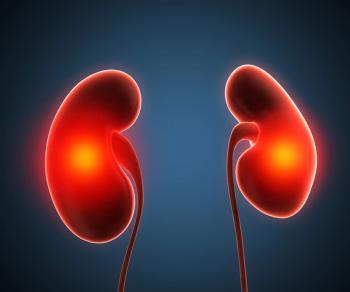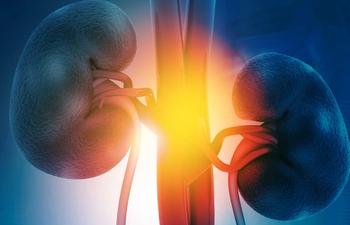
Can Sorafenib be Topped in Advanced Hepatocellular Carcinoma?
New trial results examine whether there's a drug superior to sorafenib when it comes to treating kidney cancer.
Sorafenib (Nexavar) plus doxorubicin (Adriamycin, Rubex) failed to improve survival in patients with advanced
The trial results add to the growing list of treatment strategies that have failed to show a superior survival to sorafenib, which was approved by the U.S. Food and Drug Administration in 2007 as a first-line treatment for advanced HCC. Sorafenib is one of two first-line treatment options for advanced HCC, the other being lenvatinib (LENVIMA).
“We’ve had numerous negative phase 3 trials where other agents went up against sorafenib and they failed to lead to an overall survival benefit,” said Daneng Li, MD, assistant clinical professor, hepatocellular carcinoma disease lead, Department of Medical Oncology and Therapeutics Research, City of Hope, during an interview with CancerNetwork®.
Such clinical trials include the
The CALGB 80802
After a median follow-up of 36.1 months, the median overall survival was not statistically different between the sorafenib plus doxorubicin arm and sorafenib alone arm (9.3 vs 9.4 months; HR=1.05; 95% CI, 0.83-1.31; P = .68). The median progression-free survival was also not statistically different between the sorafenib plus doxorubicin arm and sorafenib alone arm (4.0 vs 3.7 months; HR=0.93; 95% CI, 0.75-1.16; P = .54).
The time to progression did not differ significantly between sorafenib plus doxorubicin arm and sorafenib alone arm (4.7 vs 4.2 months; HR=0.92; 95% CI, 0.71-1.18; P = .49). For the sorafenib plus doxorubicin arm, 1 patient achieved a complete response (0.7%) and 14 achieved partial responses (9.3%). For the sorafenib alone arm, no patients achieved a complete response and 8 patients achieved partial responses (5.4%). The response difference was not statistically significant.
As for toxicity, the sorafenib plus doxorubicin arm had a higher proportion of grade 3 or 4 neutropenia and thrombocytopenia adverse events compared with sorafenib alone.
“This study really demonstrates that the addition of doxorubicin to sorafenib treatment did not improve overall survival compared to sorafenib alone,” said Li.
In addition, the negative results of the CALGB 80802 trial call into question the role of doxorubicin in advanced HCC, particularly given that the phase 2 trial that led to the phase 3 trial used a different control: doxorubicin instead of sorafenib.
“This really tells you that probably whatever you saw before [in the phase 2 trial] was potentially just driven by the sorafenib, not doxorubicin, and that doxorubicin probably has no activity,” said Li. He said that the phase 3 trial results suggest that doxorubicin likely does not have a role as a systemic treatment option for patients with advanced HCC.
Despite another trial failure, several clinical trials are underway to evaluate other approaches against sorafenib in this setting. Such trials include those looking at atezolizumab (Tecentriq) plus bevacizumab (Avastin), nivolumab (Opdivo) plus ipilimumab (Yervoy), and atezolizumab plus cabozantinib (Cabometyx/Cometriq).
“The goal is that potentially, finally, one of these would lead us to supplant sorafenib as the go-to choice in the first-line setting,” said Li.
Newsletter
Stay up to date on recent advances in the multidisciplinary approach to cancer.


















































































